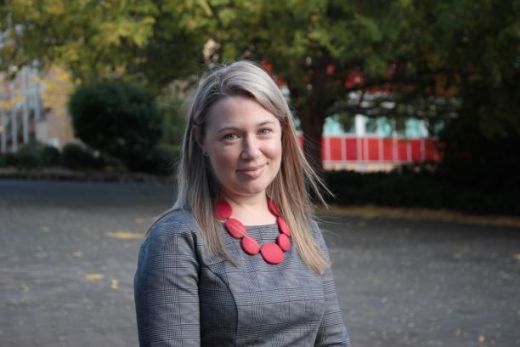
People returning to work after a period of COVID-19 isolation may feel a series of emotional and psychological waves in the weeks and months that follow, according to a national expert in the field.
University of Tasmania isolation expert, Associate Professor Kimberley Norris, pictured, said there were strategies that could help at an individual and workplace level.
The University and Associate Professor Norris today launched a resource, The Path Back from Social Isolation, to offer perspectives on what to expect and practical ways of supporting employees and each other through this period.
A short course will also be on offer to provide further public information and support.
Associate Professor Norris, who has worked extensively with people returning from extreme environments such as Antarctica, along with FIFO workers in remote places, said reintegrating is traditionally the most difficult phase of the isolation experience – and its effects should not be underestimated.
“Returning to work and the community can mean increased anxiety, irritation, mood fluctuations and a loss of identity and respite for many,” Associate Professor Norris said.
“Workers may also experience increased cognitive load characterised by memory exhaustion, poor attention and concentration, as well as difficulties in planning and processing.”
‘Reverse culture shock’ and sensory overload at driving through peak hour traffic again and leaving the isolation of home for a busy workplace will also be common.
Associate Professor Norris said people wouldn’t be returning to ‘normal’, with most people’s work lives ultimately looking quite different to the working life they had before.
“We will never truly go back to the way things were because of changes in societal norms, attitudes, behaviours and even in neural pathways in our brains,” she said.
There will be, for example, new hygiene and health considerations to incorporate in returning to work.
Consideration will also have to be given to the new social norms that have evolved during COVID -19 – for example, will we ever shake hands again or come to work with a hay fever sniffle?
The possibility of further restrictions following secondary waves of the pandemic may also affect people’s adjustment capabilities and work drive.
However, there are many strategies for supporting employees through the experience of reintegration with the key to success being an informed and slow transition to the ‘new normal’.
“With Antarctic workers, for example, reintegration and adjustment from isolation can take a year or more,” Dr Norris said.
is a researcher with the School of Psychological Sciences, which is part of the University’s College of Health and Medicine.
The Path Back from Social Isolation digital book can be accessed at:
The Path Back from Social Isolation short course can be accessed at:







